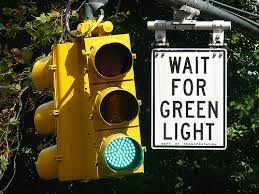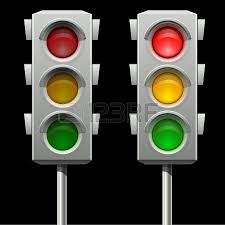

On 10 December 1868, the first non-electric, gas lit, traffic lights were installed outside the British Houses of Parliament in London to control the traffic in Bridge Street, Great George Street and Parliament Street. They were promoted by the railway engineer J.P. Knight and constructed by the railway signal engineers of Saxby & Farmer. The design combined three semaphore arms with red and green gas lamps for night-time use, on a pillar, operated by a police constable. The gas lantern was manually turned by a traffic police officer, with a lever at its base so that the appropriate light faced traffic.
Although it was said to be successful at controlling traffic, its operational life was brief. It exploded on 2 January 1869, as a result of a leak in one of the gas lines underneath the pavement, injuring or killing the policeman who was operating it. With doubts about its safety, the concept was abandoned until electric signals became available.
The first electric traffic light was developed in 1912 by Lester Wire an American policeman of Salt Lake City, Utah who also used red-green lights. On 5 August 1914, the American Traffic Signal Company installed a traffic signal system on the corner of East 105th Street and Euclid Avenue in Cleveland, Ohio. It had two colors, red and green, and a buzzer, based on the design of James Hoge, to provide a warning for color changes. The design by James Hoge allowed police and fire stations to control the signals in case of emergency. The first four-way, three-color traffic light was created by police officer William Potts in Detroit, Michigan in 1920 Ashville, Ohio claims to be the home of the oldest working traffic light in the United States, used at an intersection of public roads from 1932 to 1982 when it was moved to a local museum.
The first interconnected traffic signal system was installed in Salt Lake City in 1917, with six connected intersections controlled simultaneously from a manual switch. Automatic control of interconnected traffic lights was introduced March 1922 in Houston, Texas. The first traffic lights in England were deployed in Piccadilly Circus in 1926.
Toronto, Ontario was the first city to computerize its entire traffic signal system, which it accomplished in 1963.
Countdown timers on traffic lights were introduced in the 1990s. Timers are useful for pedestrians, to plan if there is enough time to attempt to cross the intersection before the end of the walk phase, and for drivers, to know amount of time before the light turns green. In the United States, timers for vehicle traffic are prohibited, and pedestrian timers are now required on new or upgraded signals on wider roadways.http://imgcdn.geocaching.com/cache/large/93503d1c-7280-4879-85ba-0e590134b3c5.jpg
I hope you enjoy this puzzle and the cache find. Above all, be safe, have fun, and happy caching.

You can validate your puzzle solution with certitude.